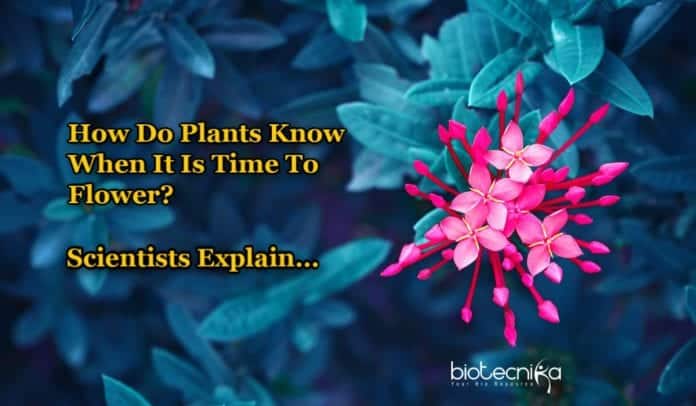What determines in plants when it is time to flower? Two key genes involved in this process have been identified by researchers at the Martin Luther University Halle-Wittenberg (MLU). They found GI and ELF3 genes to be controlling the plants’ internal clock which determines when it is the right time to flower, after monitoring the length of daylight. The study published in the Plant Journal could help to breed plants that are better adapted to their environments.
To prepare internal cellular mechanisms in anticipation of upcoming environmental changes, plants also have internal clock just like animals. This makes sure plants perform specific tasks only at the most suitable time of the day. For example, the internal clock decides the photosynthesis to be carried out during the day, extracting energy from sunlight. And plants grow more during the day. So plants have special receptors in their cells to tell the difference between day and night by sensing sunlight to start and stop metabolic processes as needed.
Dr. Usman Anwer from the Institute for Agricultural and Nutritional Sciences at MLU said this is a complex network of genes and proteins that allow plants to control different processes in relation to time so
that their biorhythm is perfectly synchronized to the day-night cycle.Plants are able to anticipate certain regularities in their environment, like the alteration of day and night via circadian mechanisms and adjust accordingly. Flowering at the right time is also a part of this. According to the ratio between the hours of sunlight and darkness, the plants adapt themselves. Some plants flower when days are longer. Few others flower after a certain length of the night. This is why different plants flower at different times.
Researchers wanted to study the genes that control the internal clocks of plants, and thereby understand what influences the flowering process. They studied two genes, GI and ELF3 which were known to have a major role in the circadian clock.
They studied how the genes work in Arabidopsis Thailand, also known as thale cress. They bred plants with various genetic defects. One group of plants was defective in GI, another in ELF3, and a third group defective in both the genes. They studied how the plants responded to different periods of light. The circadian clock of the plant still functioned when one of the two genes was defective. But the plants didn’t respond at all when both the genes were switched off. The plants were still able to perceive light, but cannot assess how long the light lasted. This explains why the plants flowered at the same time even when exposed to different lengths of the light period.
The new research on genes controlling when to flower in plants could help to design plants that can flower in other places, thereby producing a good yield. Besides light, ambient temperature also might be an external source of information for the circadian clock. The scientists are planning to study the role of temperature in plant flowering.






























